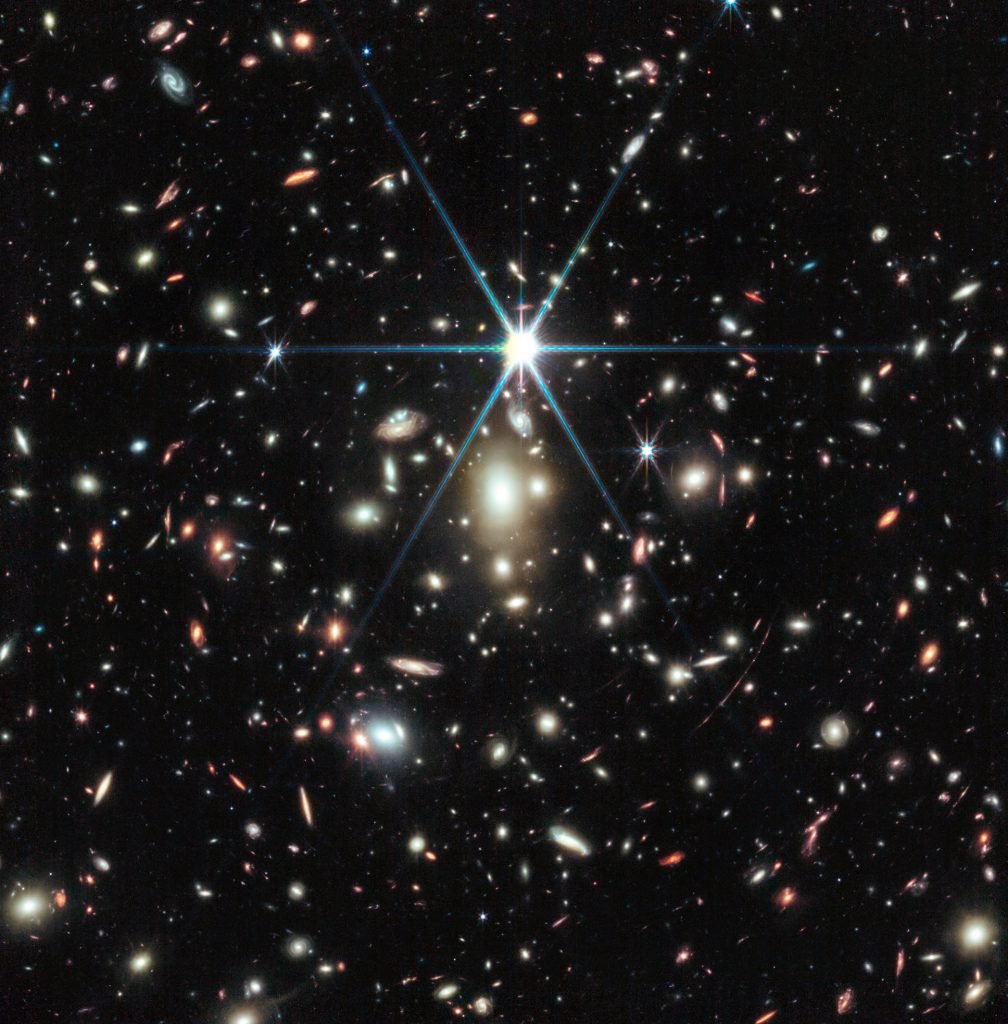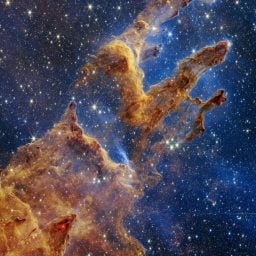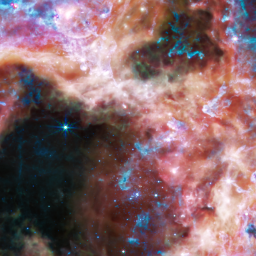Peering deep into the outer reaches of the cosmos, NASA’s James Webb Space Telescope recently captured a stunning view of Earendel, the most distant star in the known universe.
The Hubble Space Telescope discovered Earendel—which is about twice as hot and a million times more luminous as the sun in our own solar system—last year. The faint light from the far-off star in the Sunrise Arc galaxy took about 12.9 billion years to reach Earth—but since the universe is constantly expanding, Earendel is now located 28 billion light-years away.
Christened after a character from J.R.R. Tolkien’s The Silmarillion, the name Earendel means “morning star” in Old English, and is the name for the Anglo-Saxon mythological figure of the morning star. In the Lord of the Rings sequel, Eärendil, the father of Elrond, Lord of Rivendell, carried one of three Elven-forged “Silmaril” jewels across the seas. His jewel was called the morning star.
“[The name is] lovely. And this is a star, literally, from the dawn of time, the dawn of stars forming,” NASA astronomer Michelle Thaller told Space.com. “This is the first star, the farthest star we’ve ever seen, and I think Earendel is a beautiful name for it.”
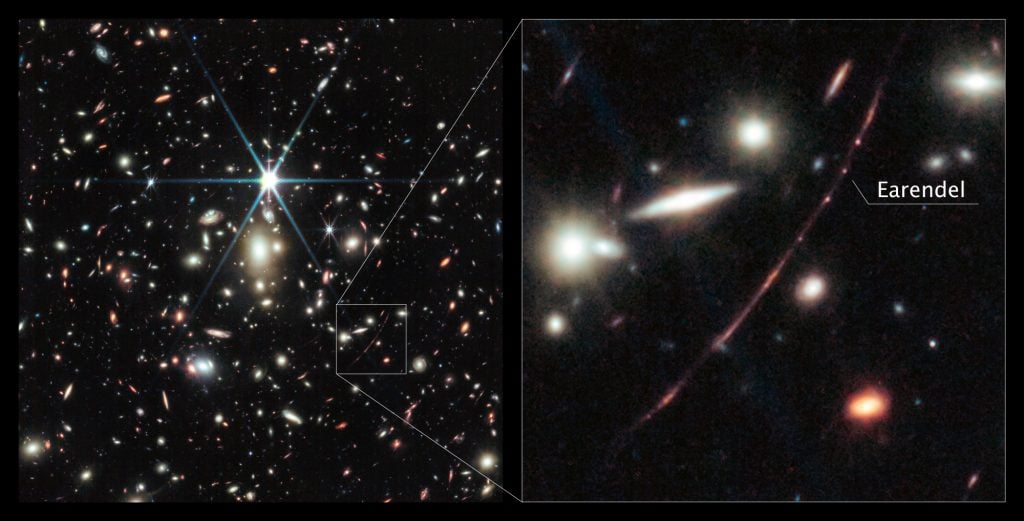
NASA’s James Webb Space Telescope captured this image of a massive galaxy cluster that contains the most strongly magnified galaxy known in the universe’s first billion years: the Sunrise Arc, and within that galaxy, the most distant star ever detected, Earendel. Image courtesy of NASA, ESA, CSA, D. Coe (STScI/AURA for ESA; Johns Hopkins University), B. Welch (NASA’s Goddard Space Flight Center; University of Maryland, College Park). Image processing: Z. Levay.
With the launch of the Webb telescope in December 2021, astronomers were hopeful that it could help identify the oldest, most-distant starts in the universe, taking us closer to the origins of the universe with the Big Bang some 13.8 billion years ago. Essentially, the telescope is designed to take baby pictures of the universe.
Webb’s 21-foot-wide mirror can capture far fainter light than the Hubble, where the mirror is less than eight feet. The new telescope is also designed to detect invisible infrared “heat” radiation from objects so distant that their ever-growing wavelengths have passed out of the visible spectrum. Infrared light, unlike visible light, can also escape clouds of dust and smoke that fill the universe, allowing observations of previously hidden regions of the cosmos.
The light of Earendel can only be detected thanks to what is called gravitational lensing, NASA explained in a statement. A galaxy cluster called WHL0137-08 that is between Earth and Earendal is so massive that it creates a wrinkle in space-time that produces a magnifying effect that allows astronomers to see about 4,000 times further than would otherwise be possible.
Gravitational lensing was also responsible for the discovery of the previous record holder for the most distant star, MACS J1149+2223 Lensed Star 1, which the Hubble Telescope discovered in 2018. That star, nicknamed Icarus, is about 14 billion light-years from Earth, meaning that its light as captured by the telescope was emitted just 4.4 billion years after the Big Bang.
Webb’s view of Earendal, by comparison, is observing light from a mere billion years after the formation of the universe, providing scientists studying the early universe with valuable new subject matter.
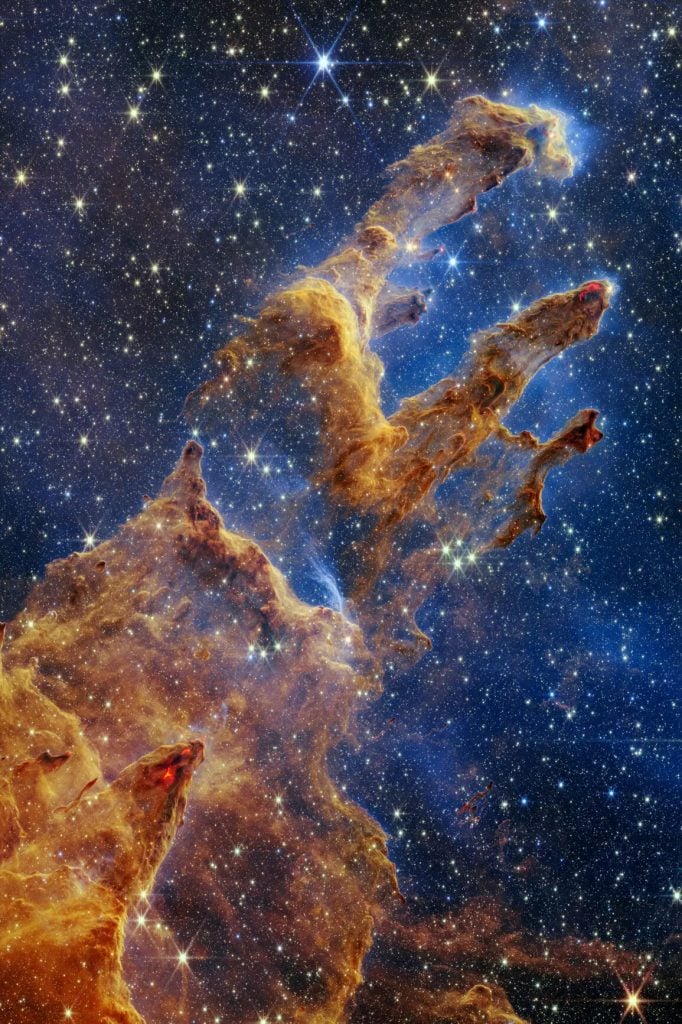
A new, near-infrared-light view of the Eagle Nebula’s Pillars of Creation from NASA’s James Webb Space Telescope. Courtesy of NASA, ESA, CSA, STScI; Joseph DePasquale (STScI), Anton M. Koekemoer (STScI), Alyssa Pagan (STScI).
When astronomers first observed Earendal last year, they suspected that a star of this large size had a companion star, which is common in many solar systems. The Webb view, which captures longer wavelengths than Hubble’s instruments can detect, suggests that Earendal has a cooler, redder companion star.
Since beaming back its first test images in May 2022, Webb has captivated astronomers and laypeople alike with its stunning views of the cosmos, including a new view of the Pillars of Creation, a stellar nursery, as well as closer places, like the planet Jupiter.
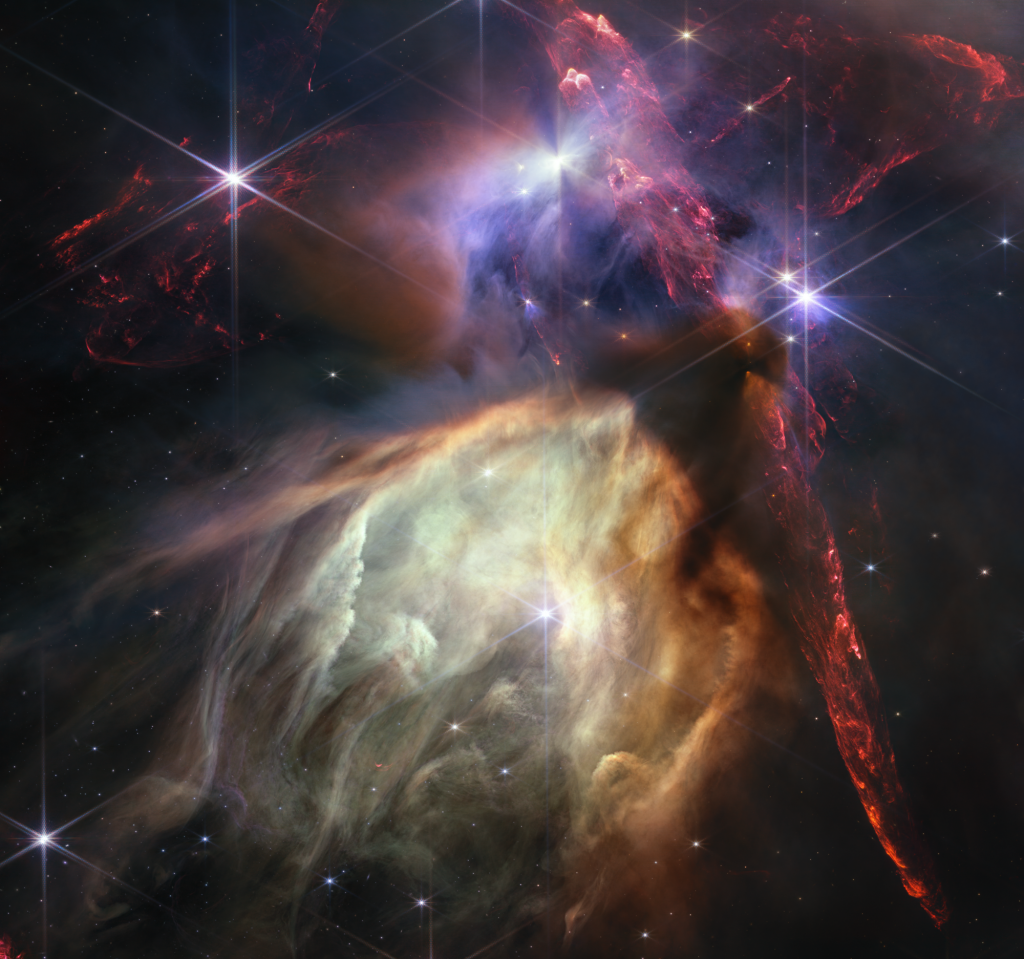
The first anniversary image from NASA’s James Webb Space Telescope is of the Rho Ophiuchi cloud complex, the closest star-forming region to Earth. Image courtesy of NASA, ESA, CSA, STScI, Klaus Pontoppidan (STScI).
In its first year of operation, Webb “performed not only better than requirements, but better than we could have possibly dreamed,” Jane Rigby, the top NASA scientist on the project, told the New Yorker, noting that the telescope is transforming what we know about the earliest years of the universe. “Where we had ignorance, we now have beautiful data.”
Other recent images captured by the telescope include an intriguing shot of what appears to be a glowing question mark in deep space.
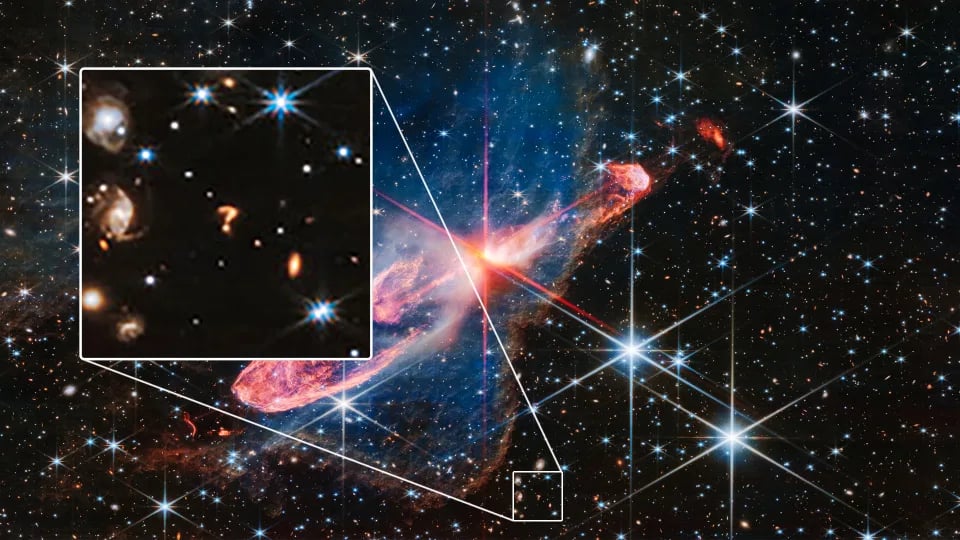
NASA’s James Webb Space Telescope captured this image of pair of young stars named Herbig-Haro 46/47, as well as what appears to be a glowing question mark and is likely two galaxies merging. Image courtesy of NASA/ESA/CSA/Joseph DePasquale (STScI).
The two parts of the question mark could be two unrelated objects, one of which is far closer to us than the other. But it is most likely a pair of galaxies, billions of light years away from our planet, in the process of merging.
“That’s something that’s seen fairly frequently, and it happens to galaxies many times over the course of their lives,” Christopher Britt, a scientist at the Space Telescope Science Institute, told National Geographic. “That includes our own galaxy, the Milky Way … [it] will merge with Andromeda in about four billion years or so.”
